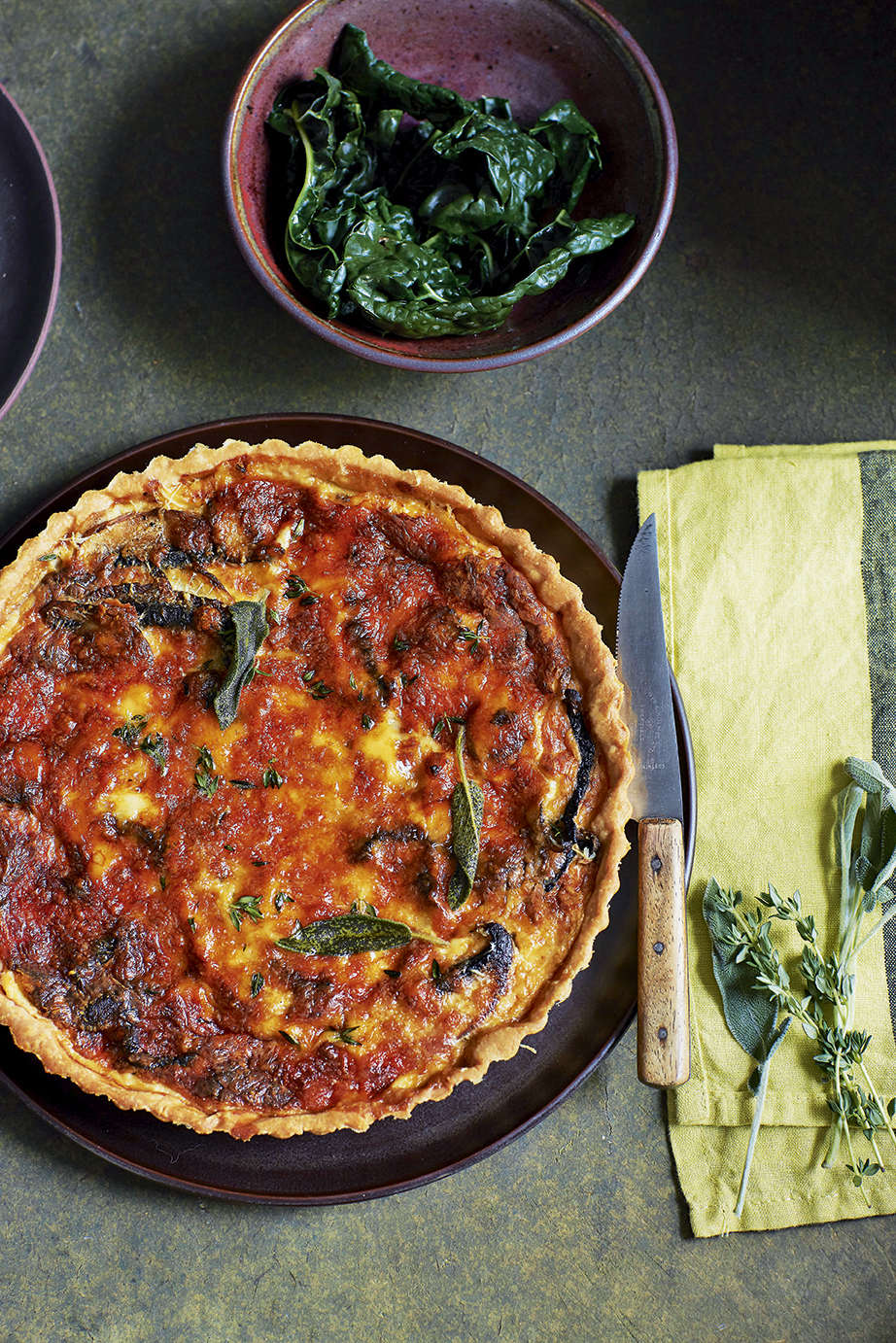Get Premium access to all the latest content online
Subscribe and view full print editions online... Subscribe
Serves 4-8 Starters and mains
First, make the pastry. Put the flour in a large bowl with a pinch of sea salt, followed by the butter. Using cool, clean hands, dip your fingers into the bowl and rub the butter into the flour with your fingertips, lifting up the mixture each time and letting it fall back into the bowl. Keep on with this action, digging deep into the bowl, making sure that all the flour gets rubbed in. After a few minutes, the mixture should look like soft white breadcrumbs.
Using a fork, add the chilled water little by little, pulling the mixture together to create a ball of dough. Using your hands, gently knead the dough in the bowl, adding a sprinkling of water if it seems too dry, or a little extra flour if it is sticky. Continue kneading until the dough is fairly smooth, being careful not to overhandle (this will result in tough, chewy pastry). Wrap the dough in cling film and chill for at least 1 hour or overnight.
Sprinkle a little flour on a clean work surface and, using a rolling pin, roll the dough into a disc approx. 24cm in diameter. If the pastry starts to crumble, push it back together gently and start again. If it is too sticky, sprinkle the dough, the rolling pin and the table with a little extra flour.
Using the rolling pin, lift the
pastry carefully into a 20–22cm
diameter fluted tart tin with a
removable base, lifting up the
edges and pushing it gently but
firmly into the corners and up
into the fluted sides of the tin.
If holes appear in the dough,
use a little of the excess to patch
them, pressing them gently over
the cracks. Put the prepared tart
shell in the fridge and chill for
at least 30 minutes.
Preheat the oven to 190C/ 170C F/mark 5. With a small knife or scissors, trim the excess pastry from around the edges of the chilled tart case, and save the trimmings in case you need to patch up any holes later.
Cut a disc of baking or greaseproof paper to approx. 4cm wider than the diameter of the tin. Press this into the tart tin, over the pastry, making sure that it is pressed well into the edges. Fill the paper-lined pastry case with baking beans , again making sure that they fill the corners well.
Bake the tart for 25–30 minutes or until the pastry sides are firm and golden brown. Remove the tart from the oven, carefully remove the paper and beans, and check for breakages or damage. If there is a crack or hole, fill it with some of the saved pastry trimmings.
Put the empty pastry case
back in the oven for 5–10
minutes or until the base is firm
and golden brown, then remove
from the oven and leave to cool.
Meanwhile, prepare the filling
ingredients. If using a leek,
trim the top and root end, then
remove the outer layer, cut the
leek in half lengthways and
wash it well before slicing.
Or slice the onion, if using.
Heat half the olive oil and half the butter in a heavy-based frying pan until gently foaming, add the sliced leek or onion and sauté over a medium to high heat, stirring and shaking the pan occasionally, making sure that the slices soften as they turn pale golden at the edges. Add a little extra olive oil if the pan looks dry. Transfer to a bowl using a slotted spoon.
Add the remaining olive oil and butter to the pan and cook the mushrooms until they are limp and the juices just start to run. Transfer to a separate bowl, as before. If you’re preparing your tart in advance, the tart and all the filling ingredients may be left overnight.
When ready to cook, make the custard. Whisk together the eggs, cream and milk with some salt and pepper until smooth.
To fill the tart, put the tart tin on a baking sheet. Scatter the onion or leek slices over the base, leaving any residual juices in the bowl. Arrange the mushroom slices over the base, minus the juices, followed by the cheese.
Very carefully pour the egg custard over and around the filling ingredients until it almost reaches the pastry top. Sprinkle with the herbs and gently transfer to the oven being careful not to allow the custard to spill over the edge, otherwise the pastry may stick to the tin and the tart will lose its clean, finished appearance.
Bake for 30–35 minutes or until the custard is puffed and golden. To check if it’s done, pierce the egg filling in the centre with a small sharp knife. If the custard runs out as liquid, put the tart back in the oven for a few more minutes until it is set.
Remove from the oven and serve immediately, or keep warm and serve with a little steamed cavolo nero or savoy cabbage. If you prefer, leave the tart to cool completely and slice the following day for lunch or a snack to eat on the run.
Cook’s note
Instead of baking beans, you could use approx. 250g cheap dried beans, which may be used again and again. Once cooled, store them in a container with a close-fitting lid.
This recipe was taken from the March 2022 issue of Food and Travel. To subscribe, click here.

Advertisement
Subscribe and view full print editions online... Subscribe